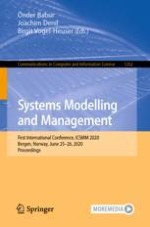2020 | Buch
Systems Modelling and Management
First International Conference, ICSMM 2020, Bergen, Norway, June 25–26, 2020, Proceedings
herausgegeben von: Önder Babur, Prof. Joachim Denil, Prof. Dr. Birgit Vogel-Heuser
Verlag: Springer International Publishing
Buchreihe : Communications in Computer and Information Science
